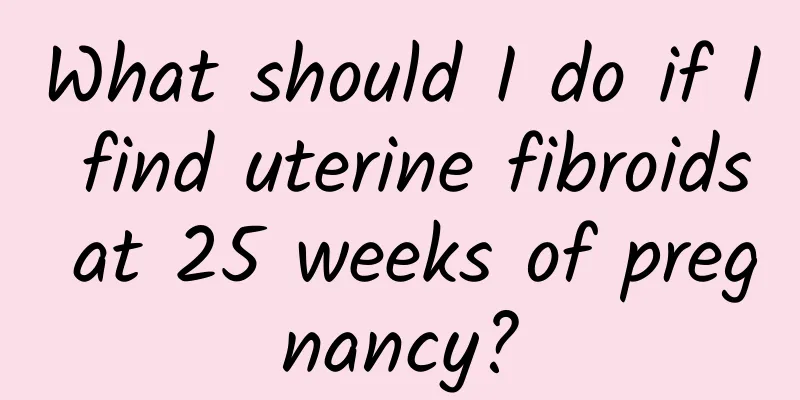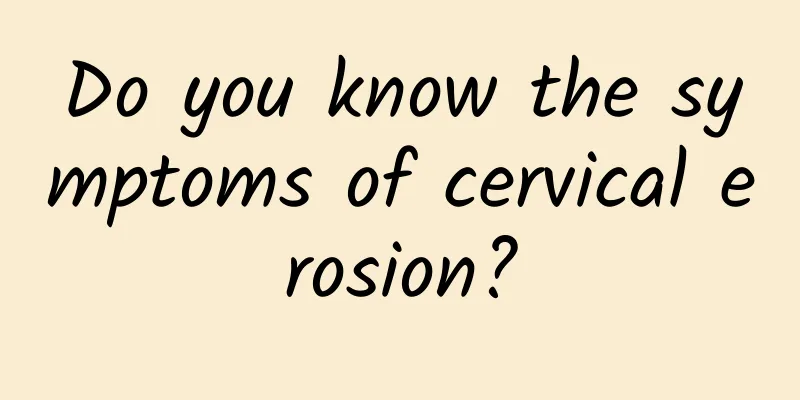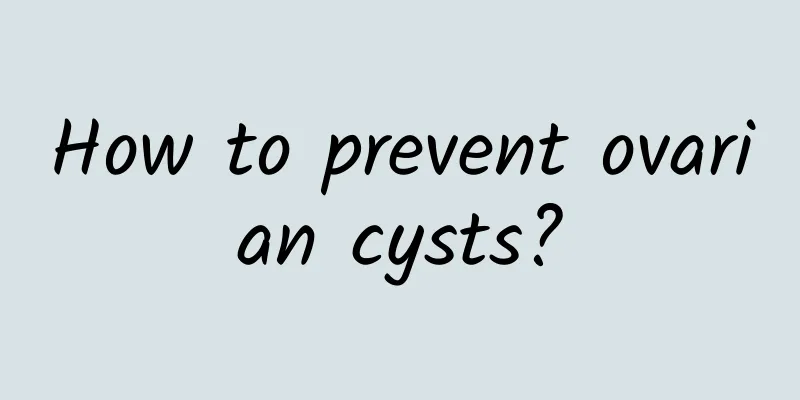What should I do if I find uterine fibroids at 25 weeks of pregnancy?

|
Uterine fibroids are tumors of the female reproductive organs and are also one of the diseases that endanger women's health. If uterine fibroids occur in the late pregnancy, it will affect the health of the fetus. So what if uterine fibroids are found within 25 weeks of pregnancy? Uterine fibroids are benign tumors composed of uterine wall muscle and fibrous tissue, which are more common in middle-aged women. Fibroids that grow in the muscle wall are called intramural fibroids, and those that grow in the uterine cavity are called submucosal fibroids. Submucosal fibroids often cause menorrhagia, irregular bleeding, infertility and miscarriage, and are called subserosal fibroids, which have no symptoms of irregular bleeding. Not most pregnant women have uterine fibroids, because the location of uterine fibroids affects the normal movement of the fetus in the uterine cavity. The treatment of uterine fibroids found after pregnancy should be determined according to factors such as the month of pregnancy, the size of the fibroids, and clinical manifestations. If it is a small fibroid, asymptomatic, it cannot be treated, but it should be checked regularly. You can wait until full-term cesarean section and resection surgery. After 25 weeks of pregnancy, if the uterine fibroids are not serious, you can wait until after giving birth to treat them. If they are serious, you can take medicine under the guidance of a doctor until delivery. If the fibroids are large, they will affect the contraction of the uterus, causing abnormal labor and delayed delivery. In addition, the possibility of placental retention, postpartum hemorrhage and postpartum infection is higher than that of normal pregnant women. Pregnant women who are found to have uterine fibroids in the late pregnancy should try to choose a cesarean section as the delivery method. The fibroid removal surgery can be performed at the same time as the cesarean section. When uterine fibroids are found in late pregnancy, you should first go to the hospital for a detailed gynecological examination to understand the condition in detail and then decide how to treat it. Generally speaking, if the condition is small and there are no symptoms, pregnant women can be treated after delivery. If it is a serious fibroid, myomectomy should be performed during cesarean section. |
<<: Is it okay to do laparoscopy for pelvic effusion?
>>: What should I eat when I have heavy menstrual flow?
Recommend
What causes ovulation bleeding?
Generally speaking, women bleed very little durin...
Can central amenorrhea be cured?
Can central amenorrhea be cured? This is a highly...
Don’t worry about not being able to regain your pre-pregnancy figure! 7 simple exercises to keep you slim and beautiful after losing weight
Combined with exercise, it can not only help you ...
How to prevent adenomyosis?
Adenomyosis is a very harmful gynecological disea...
What to do with polycystic amenorrhea
What to do about polycystic amenorrhea? 1. Regula...
Will having gynecological vaginitis affect pregnancy?
Will gynecological vaginitis affect pregnancy? Gy...
What are uterine fibroids? What are the causes of uterine fibroids?
Why do uterine fibroids change body functions and...
What are the symptoms of adnexitis?
What are the symptoms of adnexitis? What are the ...
Improper surgery is the main cause of cervical erosion
The incidence of cervical erosion is so high that...
Losing weight starts with breakfast ~ Eat milk and cheese to lose weight and control blood sugar
What to eat for breakfast to lose weight? The Bri...
What should patients pay attention to in their diet after uterine fibroid surgery?
What should patients pay attention to in their di...
If you have such discharge during pregnancy, be careful of vaginitis!
As a woman, if there is a problem in a certain pa...
Can exercise slow the incidence of cardiovascular disease? Study: Doing enough push-ups may reduce your risk of heart disease
Cardiovascular disease is a silent killer! Cardio...
The National Laboratory has announced that it can detect 7 beta-receptors
There have been waves of scandals surrounding cle...
Ovarian cysts are often caused by
Bad living habits, excessive psychological stress...









